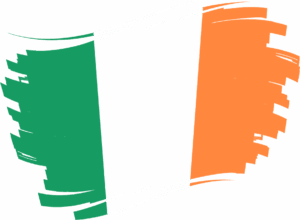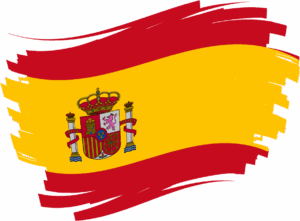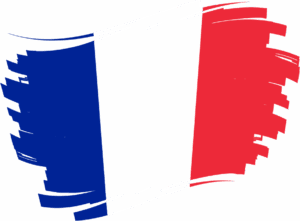
Fishing port of Union Hall
This is small fishing pier with 19 regular boats from 6m to 28m, including 1 x Demersal trawler (Prawns), 2 x Pelagic vessels and Inshore fishing boats.
There is also a RNLI station and a Rowing Club attached to the pier.

Fishing, seafood processing and sales.
Marine leisure cruises, sailing club, tourism.
Fishing practice: There are currently 5 pelagic trawlers, 36 demersal trawlers and 12 crabbers.
Landings: Prawn, Crab and white fish
![]()
A teleporter is used by harbour staff to
remove waste from the pier to a new PRF.
• They receive very little waste fishing gear, mostly legacy gear stored on pier (not in waste area)
• They have sent 2 skips since 2023 to Green Marine, Cork for recycling.
• FfL has historically gone into landfill
• Metal and buoys are separated from the FfL waste.
• The harbour master is responsible for the management of waste.
• Fishing Vessels are given a supply of coloured plastic bags for waste by the harbour master as required. The ship generated wastes are stored on the pier, at the nominated sites. These containers may be accessed around the clock.
• Waste is collected by harbour staff and then segregated into skips in PRF area.(see fig.1) for various waste flows, IWC, metal, recycling, oils, general, WEEE. centre.
• EOL: At the time of visit there is a recycling programme with a company called Green Marine in Castletownbere. Unsure what nets are recycled.
• There is no EOL pre-treatment equipment or processes in the harbour.
• EOL Separation – some components such as metal/buoys are taken out.
• Cost recovery system: As per the Rates & Charges (S.I. No 214 of 2012), there is a monthly charge on all vessels.
![]()
It is a named Fishing for Litter port, however, they are not currently operating the programme.
There is a lot of expensive retired nets sitting in an area on the port. These nets are not in use due to regulations. (see fig.2)
![]()
• This is a well funded and staffed port in comparison to others visited.
• As a result, there a very few constraints, outside external constraints such as a suitable value chain for gear and assistance implementing FfL.
• Harbour Staff have full control over waste management.
• Large enclosed Waste Compound currently being built to segregate more waste.
• Bin system on port managed regularly by staff.
• Smartphone – Whatsapp group to communicate with fishermen

This is small fishing pier with 19 regular boats from 6m to 28m, including 1 x Demersal trawler (Prawns), 2 x Pelagic vessels and Inshore fishing boats.
There is also a RNLI station and a Rowing Club attached to the pier.

Commercial, nautical-sport, tourism, fishing, and shipyard activities, fish market.
Fishing practice: for WIF, three trawlers from the Mares Circulares project (with lengths ranging from 28 to 36 meters) are collaborating
Landings: Atlantic mackerel, European anchovy, and Atlantic bonito

Fishing activity and fish market.
Fishing practice: fleet of 237 vessels and ships (mostly small-scale fishing vessels)

Fishing activity and fish market.
Fishing practice: fleet of 144 vessels and ships (mostly small-scale fishing vessels)

Fishing port and marina
Presence of a fish market
Flotilla of 95 fishing vessels (trawlers, trollers, pot vessels gillnetter)

Fishing port and marina
Presence of a fish market, online sales only Flotilla of 30 vessels (gillnetter and trollers)

Multiple port activities, highlighting liquid and solid bulk traffic, as well as general cargo. Fishing is the main pillar of the port and has a fish market.
Fishing practice: 94 vessels (mostly small-scale), but the number rises to 190 when including boats that unload at the fish market but are not based at the port.
Landings: Poor cod, horse mackerel, mackerel, sardine, common bream, European anchovy, starling, hake, whiting, sole, megrim, skate, dogfish, black scorpionfish, monkfish, John Dory, red mullet, rockling, pollock, pipefish…

General cargo (paper, wood, fruit, steel), bulk solids (grains, flours, and fertilizers), ship services (construction, repair, fuel, oils…), fishing activity (fresh and frozen), fish auction.
Fishing practice: 77 vessels and ships (mainly inshore, 12 trawlers operating in the Grand Sole fishing grounds, 4 coastal trawlers, and 8 operating in Portuguese waters)
Landings: Sardine, horse mackerel, Atlantic mackerel, Atlantic bonito, spider crab, velvet crab, shrimp, Norway lobster, hake, European hake (whiting), blue whiting, squid, monkfish, scorpionfish, red gurnard, sole, cuttlefish, octopus, conger eel, ray, others

Fishing port, commercial port and marina Presence of a fish market
Flotilla of 40 fishing vessels (mainly coastal fishing) 1500 deep-sea trawlers landing fish every year.